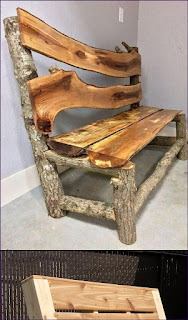Building Your Dream Bathroom Towel Rack: A Step-by-Step Guide
Hey there! So, you're looking to ditch that flimsy, over-the-door towel rack and build something a little more… you? Something sturdy, stylish, and maybe even a little bit brag-worthy? You've come to the right place! Building a wooden towel rack is easier than you think, and the satisfaction of creating something beautiful and functional for your bathroom is seriously rewarding. Let's dive in!
Planning Your Perfect Towel Rack
Before you even think about grabbing a saw, we need a plan. This isn't brain surgery, but a little forethought will save you headaches (and maybe some wood!).
Choosing Your Wood:
This is where you get to be creative! Different woods offer different looks and levels of durability. Pine is a classic choice â€" it's affordable, easy to work with, and readily available. Oak is a step up in terms of durability and looks, but it's also more expensive. Mahogany is gorgeous, but pricey. Consider your budget and the overall style of your bathroom.
Designing the Rack:
Think about how many towels you need to hang. Do you need a simple single-bar rack, or something more elaborate with multiple bars for hand towels, bath towels, and maybe even washcloths? Consider the size of your bathroom and where you want to place the rack. Sketch out a few ideas â€" even a quick doodle will help!
Here are some design ideas to get your creative juices flowing:
- A simple single-bar rack: Perfect for smaller bathrooms or if you don't need a lot of towel storage.
- A double-bar rack: Great for hanging both bath towels and hand towels.
- A ladder-style rack: A stylish and space-saving option.
- A floating shelf with towel bar: Combines storage with towel hanging.
Gathering Your Tools and Materials:
Once you have your design, it's time to gather your supplies. Don't worry, you don't need a full woodworking shop! Here's a basic list:
- Wood: The type and dimensions will depend on your design.
- Measuring tape and pencil: For accurate measurements and markings.
- Saw: A hand saw or circular saw will work. A miter saw is ideal for cleaner cuts.
- Drill and drill bits: For creating pilot holes and attaching hardware.
- Screws: Choose screws appropriate for your wood type.
- Sandpaper: Various grits for smoothing the wood.
- Wood stain or paint (optional): To personalize the look of your rack.
- Polyurethane sealant (optional): To protect the wood from moisture.
- Level: To ensure your rack is perfectly straight.
- Safety glasses and dust mask: Always prioritize safety!
Building Your Towel Rack: A Step-by-Step Guide
Alright, let's get building! Remember, these are general steps; adjust them based on your specific design.
Cutting the Wood:
Using your measurements and design, carefully cut the wood pieces to the correct sizes. Remember to take your time and make accurate cuts to avoid mistakes.
Sanding the Wood:
Sand all the pieces of wood smooth. Start with a coarser grit sandpaper, then gradually move to finer grits for a super-smooth finish. This step is crucial for a professional look and feel.
Assembling the Rack:
This is where your design comes to life! Drill pilot holes before screwing the pieces together. This prevents the wood from splitting. Follow your design carefully and make sure everything is square and level.
Finishing Touches:
Once your rack is assembled, apply wood stain or paint if desired. Let it dry completely before applying a protective sealant like polyurethane. This will protect your rack from moisture and extend its lifespan.
Installing Your New Towel Rack
Congratulations! You've built a beautiful towel rack. Now it's time to install it. This will depend on your design and wall type. Here are some general guidelines:
Stud Mounting: This is the strongest method. Locate wall studs using a stud finder and attach the rack directly to the studs using appropriate screws.
Drywall Anchors: If you can't mount to studs, use drywall anchors appropriate for the weight of your rack. These provide a secure hold, but not as strong as stud mounting.
Always use a level to ensure your rack is perfectly straight during installation. Take your time and double-check everything before drilling holes.
Finishing Up and Enjoying Your Creation!
And there you have it! Your brand-new, handcrafted wooden towel rack. Admire your handiwork, hang those fluffy towels, and bask in the glow of a job well done. You’ve not only saved money but also created something unique and personalized for your bathroom. Plus, it's a great conversation starter!
Commonly Asked Questions
Here are some questions people often ask about building wooden towel racks:
Q: What kind of wood is best for a bathroom towel rack?
A: Woods that are naturally resistant to moisture are ideal. Cedar and redwood are good options, but properly sealing any wood with a quality polyurethane will help protect it in a humid environment.
Q: How do I prevent the wood from rotting in the bathroom?
A: Apply several coats of a high-quality water-based polyurethane sealant to protect the wood from moisture. Allow each coat to dry completely before applying the next.
Q: What if I don't have any woodworking experience?
A: Don't worry! Start with a simple design, take your time, and follow the instructions carefully. There are tons of online resources and tutorials available to help you along the way. YouTube is your friend!
Q: Can I customize my towel rack?
A: Absolutely! You can paint, stain, or even add decorative elements to personalize your towel rack to match your bathroom's decor.
Q: How much does it cost to build a wooden towel rack?
A: The cost will vary depending on the type of wood, the design, and the finishes you choose. But overall, it's usually significantly cheaper than buying a pre-made rack.
Happy building! Let me know if you have any other questions.





















